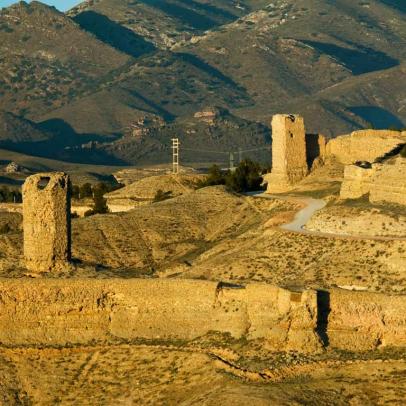After the capture of Alcocer by El Cid, the people in Calatayud asked the king of Valencia, Tamín, to get involved and help them. The king, a Muslim, sent an army of three thousand horsemen, who galloped until reaching Calatayud. The two armies fought a terrible battle at Alcocer. The Castilian army defeated the Moors. One of the Castilian knights, Martín Antolínez, came up to one of the two Muslim generals, Galve, and gave him a stroke on the head. Feeling himself so sorely wounded and fleeing away from El Cid, he tried to take refuge in Calatayud. The Christians pursued him as far as to the gates of Calatayud.
Basing ourselves on the logic of events narrated in this literary work, El Cid pursued Galve as far as the gate of Terrer (this gate’s Islamic origins are not noticeable at present, for it was later replaced by a Renaissance style gate).
Calatayud is one of the most important Islamic walled cities in Spain. It is still possible to see remains of the old Islamic city walls, which date back to the 9th century. The wall, which was a primary form of defense, used to connect the city’s five castles, which now present an unequal state of preservation. The most outstanding gate is the Emiral gate, which is situated between the castle of Ayub and the Mocha tower (GD 41.3583361,-1.646197222222222). The gate, which follows the style of the oldest gate of the Mosque of Córdoba, has a horseshoe arch and a keystone.
Next to the castle of Ayub there are parts of the wall including turrets and an Albarrana tower, which is believed to be one of the oldest of her kind.
The two most outstanding monuments within Calatayud’s city centre are as follows: the gate of Terrer, which follows the Renaissance style and has two semicylindrical turrets, and the gate of Zaragoza, which was built in the 19th century and its flanked by two squared-base towers.
Visits: Free admission. Information on guided tours can be checked at the tourist office of Calatayud.
Rev. PAB 27.12.18











